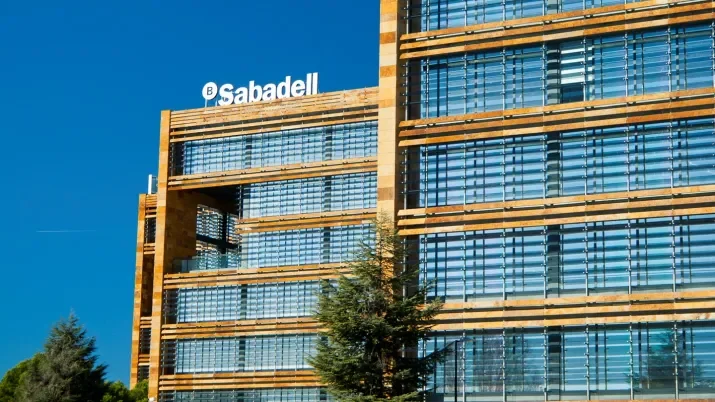Are storm clouds gathering over the UK housing market? Part two…
It’s now just over a month since part one of this blog, and recent data has inevitably shown further evidence of moderate but ongoing weakness in the UK housing market.
None of this has been dramatic, such as the most recent month-on-month fall in house prices of just 0.1% reported by Nationwide, and definitely not ‘catastrophic’ as some press headlines have suggested, but we certainly expect an ongoing weaker trend in the coming months.
Most forecasters are predicting a peak-to-trough fall in UK house prices of between 5% and 10%. As we noted in part one, this follows a rise of well over 25% following the pandemic, so this would be more of a correction than a crash.
Nevertheless, interest rates have gone up and have further to go, and economic conditions are deteriorating, squeezing homeowners’ affordability notwithstanding the broader increases in the cost of living. This will undoubtedly mean more borrowers fall into arrears, leading to repossessions, and with lower house prices some of those properties could be sold at a loss.
In part one we also established that today’s starting position is far stronger when compared to the environment prior to the previous ‘crashes’ of 2007 or 1989, in terms of unemployment, lending standards, and both bank and consumer leverage. In part two, we will be looking more closely at how bad things need to get before UK RMBS bonds begin to suffer any losses.
At the simplest level, there needs to be a combination of two things before any RMBS losses can occur. First, borrowers need to default on their loans; with no defaults there can be no losses. Second, this needs to be combined with a fall in the property value below the amount of the loan. Lenders typically only lend a proportion of the value of a property (the loan-to-value or LTV), with the balance provided by the homeowner’s deposit (or equity). This provides protection for the lender should the borrower default and the property value fall, since the homeowners’ equity is first in line to absorb any losses should the property be sold below the original value. That protection is passed on to RMBS bondholders.
The average LTV in a typical UK RMBS pool is around 60-70%. Even the most recent mortgage deals, extended to what might be considered some of the more exposed borrowers, typically have an average LTV in the 75% area. This provides a significant level of cushion for any house price deterioration before it begins to impact the RMBS bonds.
Here, we are going to look at a couple of RMBS transactions backed by loans to what might be considered riskier borrowers; first-time buyer and non-bank buy-to-let (BTL) mortgages. When we stress deals, we try to mimic a typical recession; a sharp downturn followed by a period of weak performance, and then a recovery. We can then apply severe levels of stress over-and-above the worst cases seen historically.
The first example contains owner-occupied loans originated by Lloyds Bank under the Halifax brand, where 70% of the loans are to first-time buyers, issued in 2020, just before the pandemic. These are naturally higher risk loans as these borrowers are typically younger (an average age of 33 in this case) and their earnings, while growing, are typically lower. They will also have less experience with servicing debt and will have lower savings; thereby requiring a higher LTV (around 90% at origination), also leaving them more vulnerable should they suffer a period of unemployment.
While current forecasts for a decline in house prices are between 5% and 10%, we want to be far more strenuous in our stress tests. Historical indices vary, but in the early 1990s the UK saw prices fall 20-25% nationally, and in the financial crisis the worst peak-to-trough was just under 20%. For this stress test we are going to assume house prices fall instantly by around twice that, 46%, which would equate to a 40% loss on a 90% LTV loan. This assumes house prices remain at this ‘correction level’ in perpetuity and gives no credit to loan balances amortising each payment date.
The annualised default rate for mortgages originated by Lloyds peaked at 37bp during the financial crisis and it has not exceeded 2bp since Q1 2015. So if we assume defaults rise to a peak over the period of one year, remain at that peak level for a year and then recover somewhat during year three, where do defaults peak before the RMBS bonds start to suffer a loss?
The answer for the sub-investment grade BB-rated tranche of this deal is an astounding 7% (or 700bp), roughly 18x the peak level of 37bp seen in the financial crisis. For the tranche to be wiped out completely and for losses to creep into the BBB-rated investment grade tranche above it, the default peak would need to increase to around 14.5%, nearly 40x our historical worst case.
Our second example is a pool of BTL loans originated under the Paratus Group’s Foundation Home Loans brand, an established but far less well-known non-bank lender specialising in BTL mortgages. BTL mortgages typically have a lower LTV and the weighted average on this pool was around 72.5% at origination in 2021. The annualised default rate for Paratus peaked at 3.2% during the financial crisis and has averaged 25bp in the past five years. Our stress scenario again assumes a recession over three years, however this time we assume house prices fall even further (a 56% decline) as rental properties may be more difficult to sell. There are no sub-IG tranches in this deal, so for the most junior BBB-rated tranche to take a loss the default rate would need to increase to just under 14%, roughly 4x times the peak seen during the financial crisis.
These two examples show just how resilient RMBS bonds are to withstand both house price declines and high levels of foreclosure, at levels far exceeding those seen even in the worst periods on record.
In fact, they also demonstrate how robust the housing market is overall. Yes, house prices may fall, and defaults may rise in a recession, but the vast proportion of mortgages (over 99.6% in Lloyds’ case and 96.8% for Paratus’ BTL book) survived the worst year of the financial crisis unscathed.
As noted above, we have every expectation that some deterioration is inevitable as a result of the current economic outlook. However, we expect the performance of UK RMBS mortgage pools to be very resilient to the effects of a rise in unemployment and significant house price declines, particularly given the starting point of low unemployment, far higher standards of underwriting, higher levels of savings and a greater focus from lenders on forbearance rather than foreclosure.
Going forward we will aim to update regularly on how loan performance is progressing as UK housing and mortgage markets evolve.




